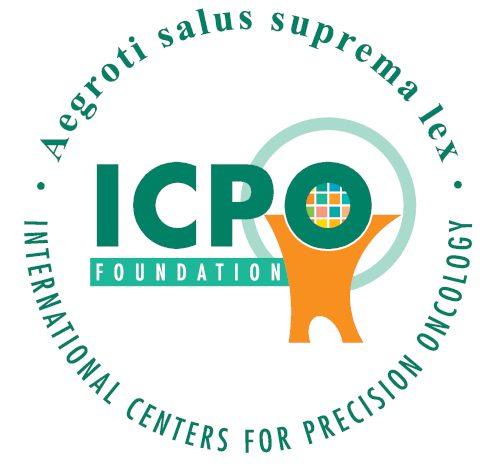
Washington University School of Medicine Researchers Find Accelerated Aging May be Contributing to an Increase in Early-onset Cancers among Young People
More research into accelerated aging may lead to new clinical laboratory and anatomic pathology testing biomarkers for early-onset cancer
Could accelerated aging be contributing to the rise in early-onset cancer rates among younger individuals? A recent study conducted at the Washington University School of Medicine in St. Louis (WUSTL) claims the condition may be partially to blame for the increase in cancer diagnoses among young people. But what is accelerated aging, and what tests will clinical laboratories be required to perform to help doctors diagnose early-onset cancer in that age group?
“Accelerated aging—when someone’s biological age [how old one’s cells are] is greater than their chronological age [how long one has existed]—could increase the risk of cancer tumors,” Fox News reported.
In their presentation at the 2024 American Association for Cancer Research (AACR) annual meeting, the WUSTL researchers noted that “individuals born in or after 1965 had a 17% higher likelihood of accelerated aging than those born between 1950 and 1954,” according to an AACR news release.
The scientists studied “the association between accelerated aging and the risk of early-onset cancers,” and found that “each standard deviation increase in accelerated aging was associated with a 42% increased risk of early-onset lung cancer, a 22% increased risk of early-onset gastrointestinal cancer, and a 36% increased risk of early-onset uterine cancer.”
“Multiple cancer types are becoming increasingly common among younger adults in the United States and globally,” said Ruiyi Tian, MPH, a PhD candidate at WUSTL, in the news release. “Understanding the factors driving this increase will be key to improve the prevention or early detection of cancers in younger and future generations.”
Tian was part of the team conducting the study at the Cao Lab at WUSTL. The primary function of this lab is to uncover risk factors for various cancers and develop precision medicine protocols for cancer prevention and treatment.

“Historically, both cancer and aging have been viewed primarily as concerns for older populations,” Ruiyi Tian, MPH (above), a graduate student at Washington University School of Medicine in St. Louis and one of the study’s researchers, told Fox News. “The realization that cancer, and now aging, are becoming significant issues for younger demographics over the past decades was unexpected.” Clinical laboratories and anatomic pathologists will likely be performing cancer testing on younger populations as incidences of early-onset cancer increase. (Photo copyright: Washington University School of Medicine in St. Louis.)
Biological versus chronological aging
A study published last year in BMJ Oncology titled, “Global Trends in Incidence, Death, Burden and Risk Factors of Early-Onset Cancer from 1990 to 2019,” stated that early onset of 29 cancers increased by almost 79% globally between 1990 and 2019. Early-onset cancer deaths rose by almost 28% during that time period.
The WUSTL researchers set out to prove that both chronological age and biological age could be determining factors in early-onset cancers. Chronological age refers to the amount of time an individual has been alive, while biological age refers to the age of cells and tissues based on physiological evidence.
“We all know cancer is an aging disease. However, it is really coming to a younger population,” said Yin Cao, MPH, Associate Professor of Surgery at WUSTL and senior author of the study, told CNN. “So, whether we can use the well-developed concept of biological aging to apply that to the younger generation is a really untouched area.”
To perform the research, the scientists examined data of 148,724 individuals between the ages of 37 and 54 located in the UK Biobank database. They calculated each person’s biological age by examining nine biomarkers found in blood:
They then input the data into the PhenoAge algorithm which estimates the biological age of each person.
“Individuals whose biological age was higher than their chronological age were defined as having accelerated aging,” the AACR news release noted.
The next step was to calculate each person’s level of accelerated aging by comparing biological and chronological ages. They then looked at how many of the individuals studied had been diagnosed with early-onset cancers.
For the WUSTL study, early-onset cancers were defined as cancers that were diagnosed before age 55. The researchers found 3,200 cases where such cancers had been discovered.
Faster Agers Twice as Likely to Develop Early-onset Cancer
The scientists then compared the data of people who showed slower aging to those showing faster aging based on the biobank samples. They found that individuals who had the highest accelerated aging were twice as likely to be diagnosed with early-onset lung cancer, had a 60% higher risk of gastrointestinal tumors, and had a more than 80% higher risk of uterine cancer.
“By examining the relationship between accelerating aging and the risk of early-onset cancers, we provide a fresh perspective on the shared etiology of early-onset cancers,” Tian said in the news release. “If validated, our findings suggest that interventions to slow biological aging could be a new avenue for cancer prevention, and screening efforts tailored to younger individuals with signs of accelerated aging could help detect cancers early.”
More clinical studies and research are needed to determine if accelerated aging truly is causing a rise in early-onset cancers. The fact that all of the participants in this study were from the United Kingdom indicates that future studies should include more diverse populations.
Studying accelerated aging’s influence on early-onset cancer may lead to new biomarkers that clinical laboratories and anatomic pathologists can use to help physicians diagnose the condition. Laboratory scientists and pathologists will want to follow any ongoing research and studies on the trend, as ‘accelerated aging’ might be identified as a new disorder to look for when diagnosing and treating cancers.
—JP Schlingman
Related Information:
Accelerated Aging May Increase the Risk of Early-onset Cancers in Younger Generations
Cancer Rates Rising in Young People Due to ‘Accelerated Aging,’ New Study Finds: ‘Highly Troubling’
Global Trends in Incidence, Death, Burden and Risk Factors of Early-onset Cancer from 1990 to 2019
Accelerated Aging Linked to Cancer Risk in Younger Adults, Research Shows
Accelerated Aging May be a Cause of Increased Cancers in People under 55
Utah Cancer Researcher Says New Accelerated Aging Study Needs More Examination
What to Know about Rising Rates of ‘Early-Onset’ Cancer
Chronological vs. Biological Age
Early-onset Cancer: Faster Biological Aging May Be Driving Rates in Young Adults
Rise in Cancer Rates among Young People Contributes to New Phenomenon of ‘Turbo Cancers’ as a Cause for Concern
American Cancer Society Annual Report Shows Cervical Cancer Rate Increasing, but Only among 30- to 40-Year-Olds

Ethel Purdy – Medical Blogger & Pharmacist
Bridging the world of wellness and science, Ethel Purdy is a professional voice in healthcare with a passion for sharing knowledge. At 36, she stands at the confluence of medical expertise and the written word, holding a pharmacy degree acquired under the rigorous education systems of Germany and Estonia.
Her pursuit of medicine was fueled by a desire to understand the intricacies of human health and to contribute to the community’s understanding of it. Transitioning seamlessly into the realm of blogging, Ethel has found a platform to demystify complex medical concepts for the everyday reader.
Ethel’s commitment to the world of medicine extends beyond her professional life into a personal commitment to health and wellness. Her hobbies reflect this dedication, often involving research on the latest medical advances, participating in wellness communities, and exploring the vast and varied dimensions of health.
Join Ethel as she distills her pharmaceutical knowledge into accessible wisdom, fostering an environment where science meets lifestyle and everyone is invited to learn. Whether you’re looking for insights into the latest health trends or trustworthy medical advice, Ethel’s blog is your gateway to the nexus of healthcare and daily living.



